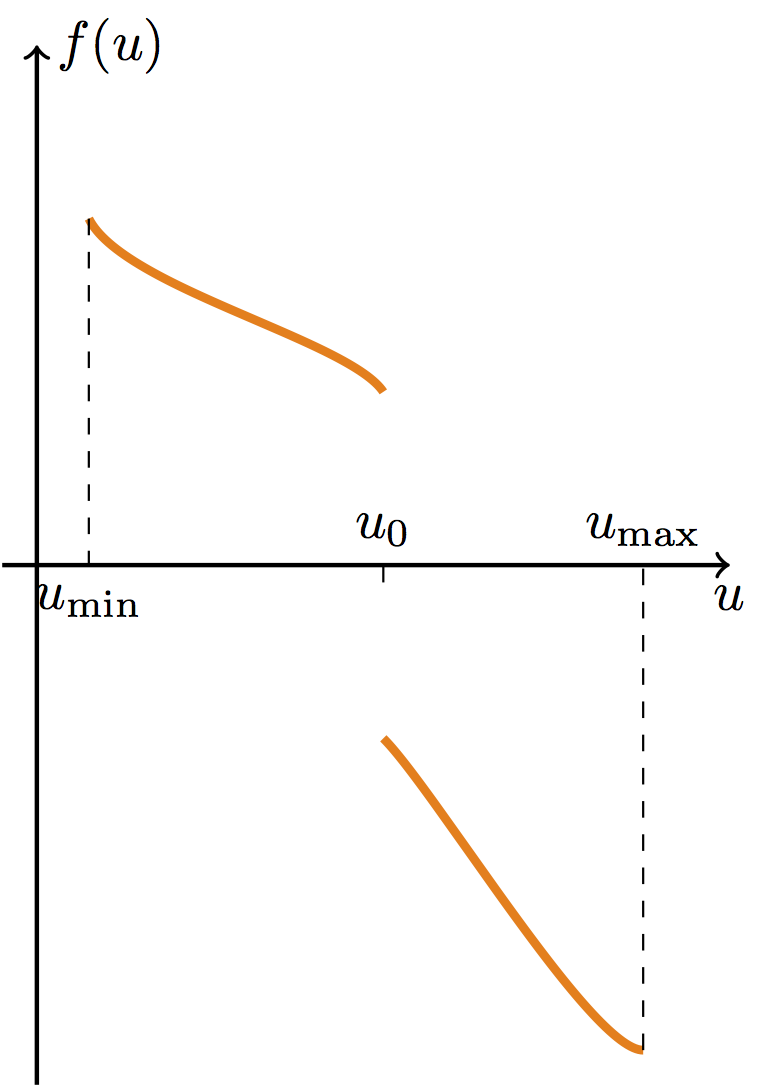Most utility functions we work with are already continuous, so I thought it was understood that it must continuous. But how would I show that if the utility function is discontinuous the identity V(p, e(p,u))=u might not hold?
1 Answer
Define the function
$$ V(p, e(p, u)) - u = f(u) ~~~\mbox{for}~~~ u_\min \leq u \leq u_\max $$
Your problem is then reduced to finding a point $u^* \in [u_\min, u_\max]$ such that $f(u^*)=0$. First, this problem may have not solution at all, even if the function is continuos. That being said, if the function is not continuos, you can have a situation like the one below

Clearly, this function is not continuos at $u=u_0$, moreover, it is not possible to find a point $u^*$ such that $f(u^*) = 0$.
-
1$\begingroup$ In your answer the function $e(p,u)$ itself is not defined at $u^*$. As long as that is allowed there is no need to bother with such a complicated example. Let $e(p,u)$ be undefined everywhere. Now $V(p,e(p,u))$ is also undefined everywhere, hence $V(p,e(p,u)) \neq u$ for any $u$. $\endgroup$– GiskardCommented Sep 28, 2017 at 5:45
-
$\begingroup$ @denesp Why is $e(p,u)$ necessarily undefined and not $V(\cdot)$ alone? $\endgroup$ Commented Sep 29, 2017 at 20:23
-
$\begingroup$ @luchonacho What expenditure is requred to reach utility level $u$ at price $p$ if utility level $u$ can never be reached? (Because the utility function does not give value $u$ to anything.) $\endgroup$– GiskardCommented Sep 29, 2017 at 20:53
-
1$\begingroup$ @denesp Elementary, my dear Watson... $\endgroup$ Commented Sep 29, 2017 at 21:02
-
$\begingroup$ @denesp My point is exactly that: if the function is not defined at a point, the problem $f(u) = 0$ may not have a solution. That's the reason for the graph, to show it more explicitly $\endgroup$– caveracCommented Oct 1, 2017 at 9:55